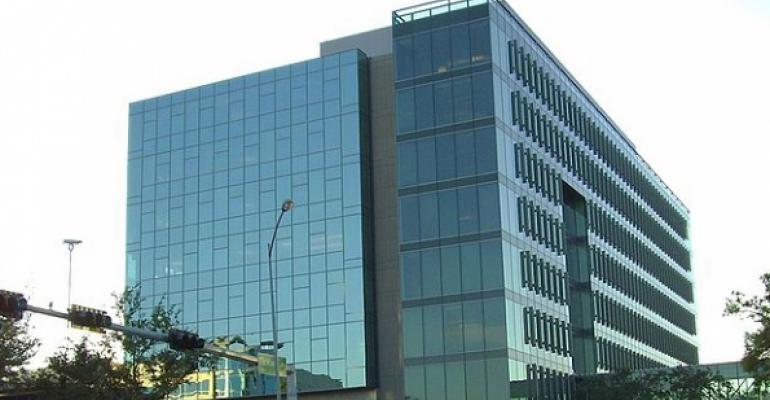The decision Tuesday by a U.S. District Court judge to grant an injunction delaying the merger of Sysco Corp. and US Foods Inc. will likely kill a deal that has been in the works for two years.
But that doesn’t mean the food distribution industry won’t change — or that it hasn’t changed already.
“The judge’s decision doesn’t mark the end of a period of disruption, but the beginning,” said Debra Bachar, a food industry consultant who has closely watched the merger. “The business economics of foodservice, particularly in the supply system, is changing the face of the industry and guarantees more mergers and acquisitions ahead.”
Private-equity groups Clayton Dubilier & Rice LLC and KKR & Co. LP put US Foods up for sale in 2013. Sysco agreed to buy the Rosemont, Ill.-based company in December 2013, for $3.5 billion. The deal, valued at $8.2 billion, including assumed debt, would create a single, $65 billion nationwide broadline distributor.
The merger ignited strong opposition among restaurant operators and other foodservice providers, but few expected regulators to block the merger. Many in the foodservice industry spent more than a year preparing for a changed business environment, with a single giant distributor rather than two large competitors, before the Federal Trade Commission sued to block the merger. And then U.S. District Court judge Amit Mehta agreed to a preliminary injunction that delayed the deal so the FTC’s lawsuit could be heard.
Mehta’s decision is widely expected to kill the deal. Attorneys said when the FTC filed its suit that the loser of the injunction hearing was likely to drop the case. In May, a US Foods executive said in court that the company would likely kill the merger if it were delayed any further.
But 18 months is a long time for companies to make changes. So the industry will not likely go back to the way it was back in December 2013, experts said.
“Distributors, manufacturers and operators began to build into their business planning processes a world that included a single, $65 billion mega-broadline distributor,” said Bob Sala, former founder and CEO of Distribution Market Advantage, a national distribution marketing company who has since become an industry consultant.
“Distributors and manufacturers shifted their go-to market strategies, expansion plans and capital investment priorities during the elongated regulatory review. Independent operators who were leveraging Sysco against US Foods began using other local broadline distributors to ensure that they had a new distributor to leverage against the new, combined entity.”
The bigger question lies with US Foods, which has been in limbo for well over a year, uncertain whether it would be a standalone company or part of Sysco. Foodservice consultants say some restaurant chains have ended their contracts with US Foods in anticipation of the merger.
Some chains did contingency planning in case the merger went through, and “in the process learned about new sources of broadline supply that they had not considered or were not aware of,” Sala said.
But US Foods has not sat idle over the past 18 months. The company closed one facility in Florida in May, but opened another in New Hampshire the same month. If the merger is officially declared dead, that could open the way for the company to make other planned changes.
Yet the company’s future remains cloudy in the wake of the judge’s decision. US Foods, like many distributors, operates on thin margins, but is also saddled with $4.7 billion in long-term debt.
“A company with significant debt and a margin problem needs to do something different,” Sala said. Division closures at the company “may be an indication of things to come,” he added.
Industry consolidation likely
Many speculate that US Foods could be put up for sale again. Some observers say Performance Food Group could be a logical fallback option for US Foods’ owners. The company had agreed to buy 11 US Foods facilities as part of a deal designed to win FTC approval. The merger’s potential collapse would end that agreement.
Others, however, dismiss the idea that PFG would buy US Foods in its entirety, and note that among distributors, Sysco was the only company with the ability to swallow US Foods and its debt load whole.
But industry consolidation is likely. Regional broadline distributors like PFG and Reinhart Foodservice have been acquiring smaller distributors for years, and that trend is likely to continue, particularly given the thin industry margins.
“Broadline distributors will acquire their way to competitive advantage,” Bachar said. “The explosion of new sourcing options available to operators — from e-commerce to chef warehouses — signals that the value from traditional broadliners has eroded faster than expected.”
Indeed, Bachar added, “Sysco’s competitor is no longer US Foods. Sysco’s competitive focus will now be on regional broadliners who are competing for billions of dollars in migrating revenue that could be up for grabs.”
Many in the industry welcome the evolution, saying that it has been operating for too long under the same business model. That model should change, given the competitiveness of the industry and its thin margins.
“The entire industry is in desperate need of a renewal,” said Peter Koteas, a foodservice industry management consultant. “The distribution process has not changed since the 1960s, only consolidated. The large, multi-market distribution center concept is too expensive, the hierarchy too cumbersome, the manufacturer subsidy too onerous to continue.”
Contact Jonathan Maze at [email protected].
Follow him on Twitter: @jonathanmaze

